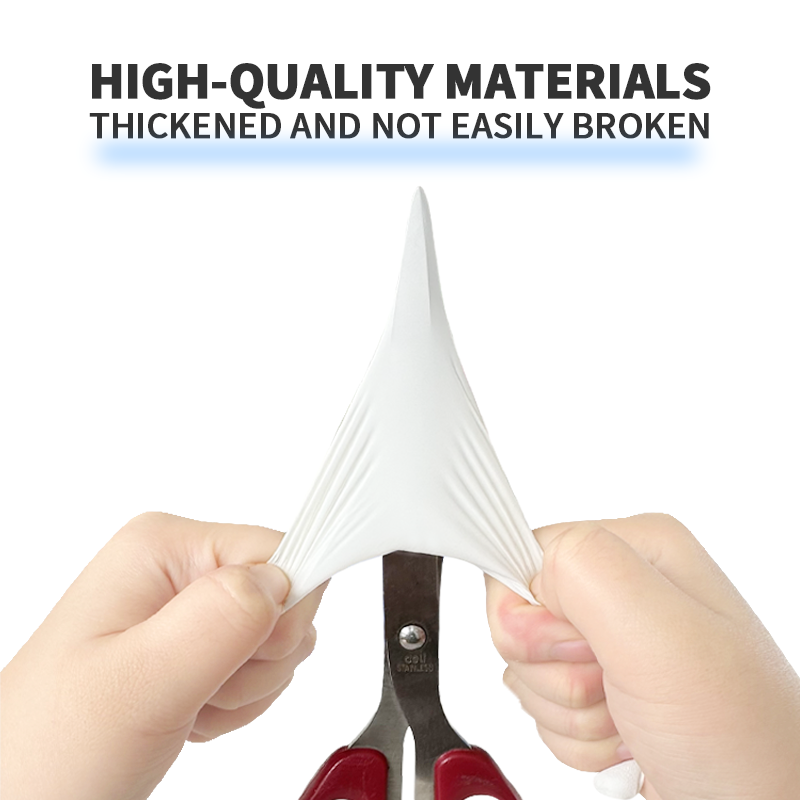In industrial and cleaning environments, worker safety remains paramount, with cleaning gloves serving as a crucial barrier between hazardous substances and human skin. These specialized protective gear items have evolved significantly over the years, incorporating advanced materials and designs to ensure maximum protection while maintaining comfort and dexterity for workers handling dangerous chemicals and substances.
The importance of proper hand protection cannot be overstated, as exposure to harmful substances can lead to severe immediate and long-term health consequences. Modern cleaning gloves are engineered to withstand various chemical compounds, acids, bases, and other potentially dangerous materials commonly encountered in industrial cleaning and maintenance operations.
Contemporary cleaning gloves utilize sophisticated polymer blends that offer superior resistance to chemical penetration. Nitrile, latex, and neoprene materials are carefully selected and processed to create barriers that effectively block harmful substances. These materials undergo rigorous testing to ensure they maintain their protective properties even under extreme conditions.
The molecular structure of these polymers is specifically designed to repel various chemical compounds while maintaining flexibility and durability. Manufacturers continually research and develop new material combinations to enhance protection levels and glove longevity.
Modern cleaning gloves often feature multiple layers of protection, each serving a specific purpose. The outer layer typically provides chemical resistance, while inner layers offer additional barrier protection and comfort. Some advanced models incorporate moisture-wicking materials to enhance worker comfort during extended use.
The layering system also includes specialized coatings that improve grip performance and prevent accidental slippage when handling wet or slippery objects. This thoughtful construction ensures both safety and functionality in challenging work environments.
Quality cleaning gloves must meet strict industry standards and undergo comprehensive testing protocols. These certifications ensure the gloves provide adequate protection against specific chemical threats. Manufacturers conduct permeation tests to measure how long it takes for hazardous substances to break through the glove material.
Different glove types receive ratings based on their resistance to various chemical families, helping safety managers select appropriate protection for specific applications. Regular testing and certification updates ensure continued compliance with evolving safety standards.
Understanding chemical compatibility is crucial when selecting cleaning gloves for specific tasks. Different glove materials offer varying levels of protection against different chemical compounds. Safety professionals must carefully match glove types to the specific hazardous substances workers will encounter.
Compatibility charts and guidelines help identify which cleaning gloves are best suited for particular chemicals and applications. This information is essential for maintaining workplace safety and ensuring optimal protection levels.

Modern cleaning gloves incorporate ergonomic design principles to reduce hand fatigue and improve dexterity. Anatomically correct shapes and varying thickness zones allow for natural hand movement while maintaining protective properties. This attention to ergonomics helps workers maintain productivity during extended use periods.
Manufacturers use advanced modeling techniques to create gloves that conform to hand shapes while allowing sufficient flexibility for complex tasks. The balance between protection and usability remains a key focus in glove design evolution.
Effective cleaning gloves must manage both external and internal conditions. Advanced materials and designs help regulate temperature and moisture levels inside the gloves, preventing discomfort and potential skin issues during prolonged wear. Some models feature specialized ventilation systems to improve air circulation.
Moisture management technologies help prevent excessive sweating while maintaining the glove's protective capabilities. This balance is crucial for worker comfort and compliance with safety protocols.
Regular inspection of cleaning gloves is essential to maintain their protective capabilities. Workers must check for signs of wear, degradation, or damage before each use. Clear protocols for glove replacement help ensure consistent protection levels and worker safety.
Training programs should include proper inspection techniques and criteria for determining when gloves need replacement. This proactive approach helps prevent exposure to hazardous substances through compromised gloves.
Proper storage and maintenance of cleaning gloves significantly impact their effectiveness and longevity. Gloves should be stored in controlled environments away from direct sunlight, extreme temperatures, and potential contaminants. Regular cleaning and decontamination procedures help maintain glove integrity.
Detailed care instructions should be provided to all workers, including proper methods for removing gloves without contaminating skin or surfaces. These procedures are crucial for maintaining both personal safety and glove effectiveness.
Cleaning gloves should be replaced immediately if any signs of damage are detected, such as tears, punctures, or discoloration. Even without visible damage, gloves should be replaced according to manufacturer recommendations and usage patterns, typically every few months for regular use or sooner in heavy-duty applications.
The reusability of cleaning gloves depends on the specific chemicals encountered and the glove material. Some gloves are designed for single use, while others can be safely decontaminated and reused. Always follow manufacturer guidelines and safety protocols for specific chemical exposures.
Key factors include the types of chemicals being handled, duration of exposure, required dexterity levels, temperature conditions, and potential physical hazards. Consider also the comfort and fit for workers, cost-effectiveness, and compliance with industry safety standards.


Copyright © 2024 Sichuan Samson Technology Co., Ltd - Privacy policy